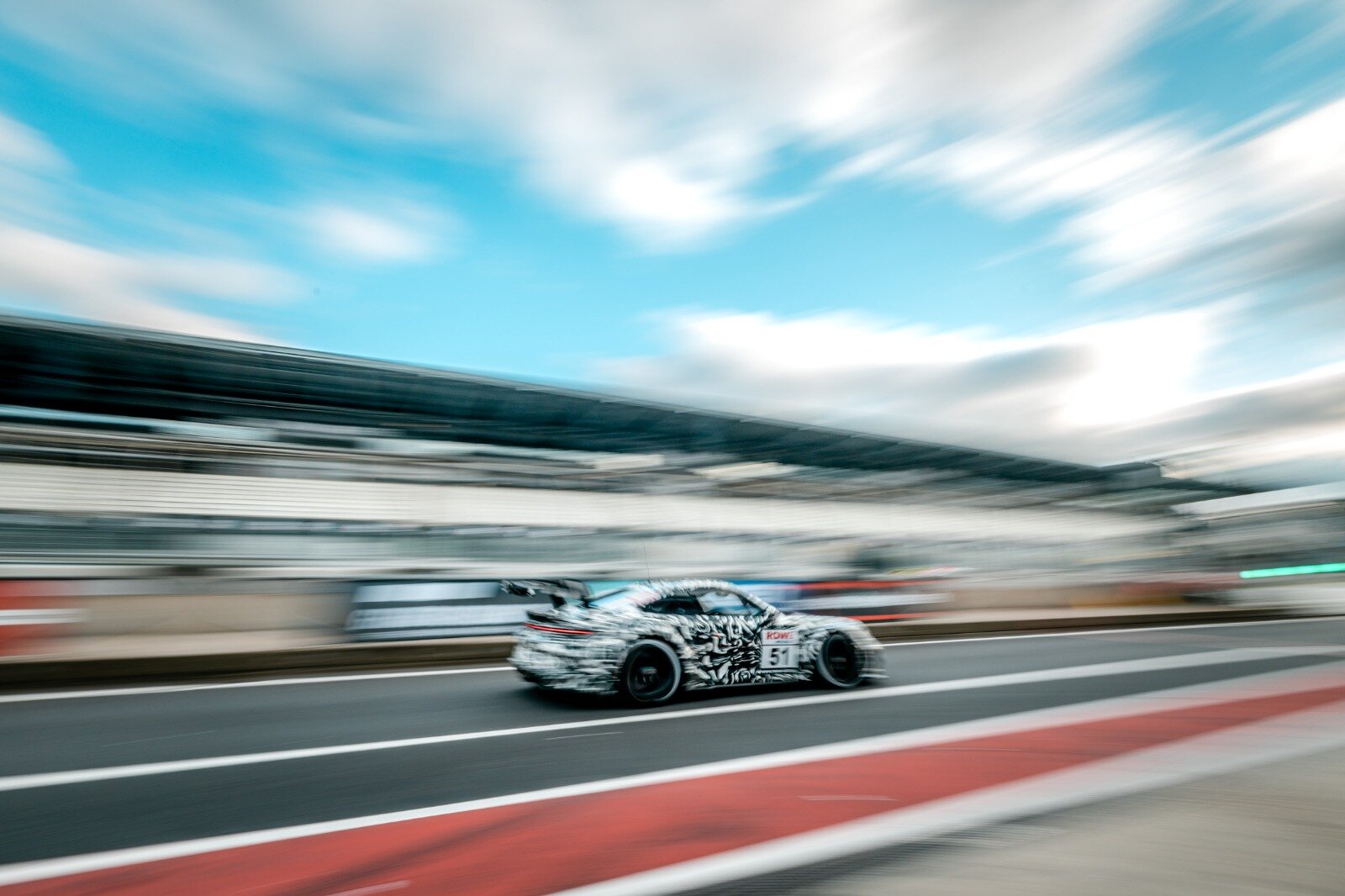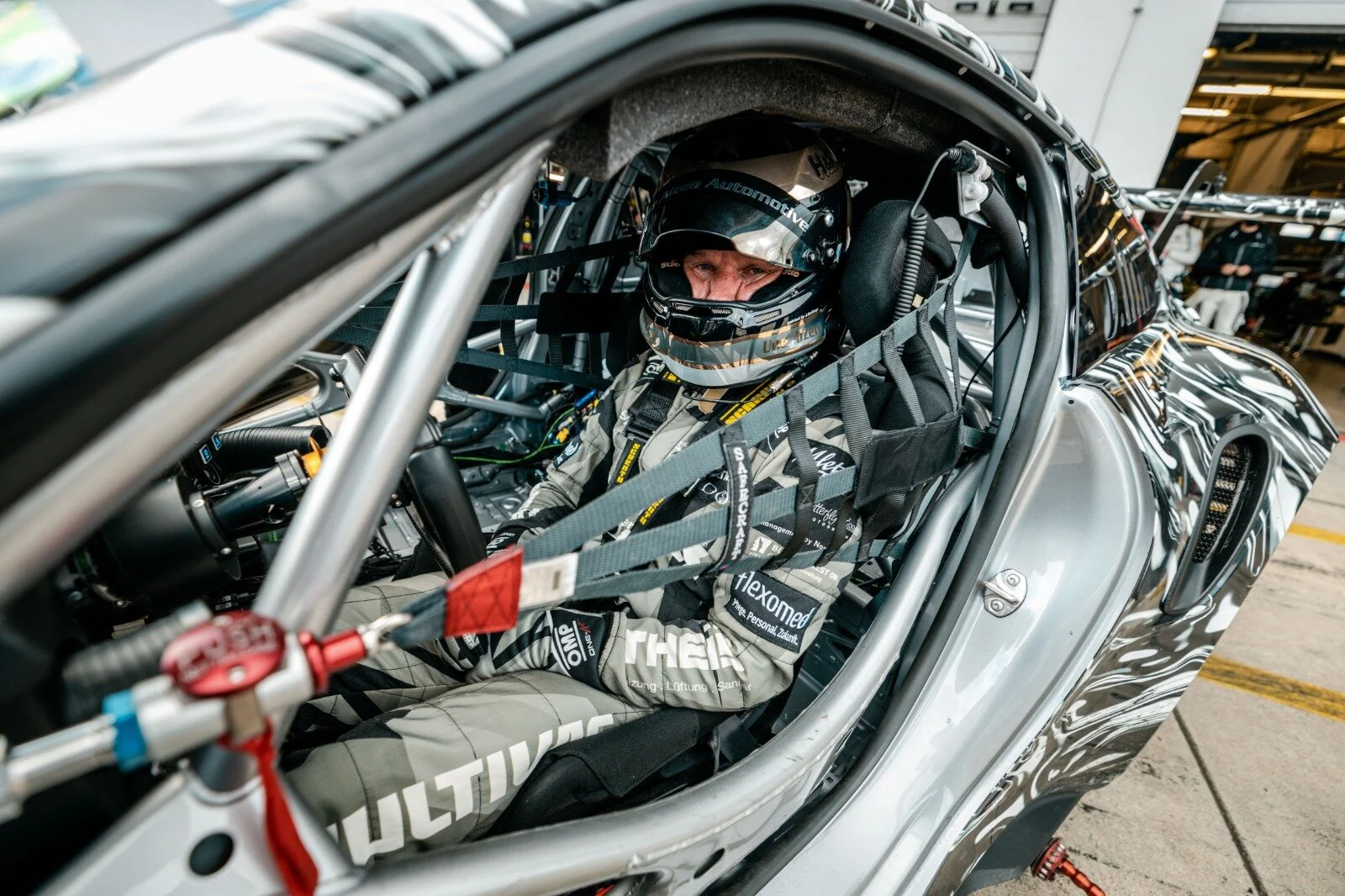The new Porsche 911 GT3 Cup celebrates its endurance debut
The current Porsche 911 GT3 Cup has successfully demonstrated its potential for long-distance races in a test run under real conditions. The approximately 375 kW (510 PS) cup vehicle based on the 911 generation 992 competed in the penultimate round of the Nürburgring Endurance Series (NLS). Marco Holzer and Uwe Alzen (both from Germany) finished the 4-hour race on the 24.458-kilometer combination of the Nordschleife and the short connection of the Grand Prix course in 18th place overall. The 911 GT3 Cup has served as the new one-make cup vehicle for the Porsche Mobil 1 Supercup and the Porsche Carrera Cups in Germany, France, the Benelux countries, North America and Asia since the beginning of the current season.
"As expected, the 911 GT3 Cup worked extremely well on its racing debut on the particularly demanding Nürburgring-Nordschleife," sums up project manager Jan Feldmann. “When developing it, we made sure from the start that it could also be used in long-distance competitions aside from the one-make cup sprint races. Today's test run in the NLS showed that our team did a great job. "
The spectacularly designed 911 GT3 Cup is the first brand cup car from Porsche with a turbo-wide body. With an output of around 375 kW (510 PS), it exceeds its direct predecessor by 25 PS and is also designed to run on synthetic fuels. They enable a significant reduction in CO2 in competition. Just like its predecessor, the 911 GT3 Cup rolls off the assembly line together with the 911 series models in Stuttgart-Zuffenhausen. After the 160 copies that have already been made for 2021, the second production series is currently under way. It includes more than 300 other racing vehicles to meet the high demand.
Compared to the previous model, in addition to the further improved performance and a more aggressive design, the focus was also on easier handling and greater durability, as well as less effort for use and maintenance. The result is reflected in numerous aspects of the new racing vehicle, which also have a positive effect on its suitability for long-distance competitions and 24-hour use. For example, additional flared fenders made a more harmonious wheel-tire combination possible with 12-inch wide rims on the front and 13-inch wide wheels on the rear axle. It is typical of GT racing and has a positive effect on the handling and drivability of the racing car. While the rear axle remained basically unchanged compared to the previous 911 GT3 Cup (generation 991),
The modifications for use in the “Green Hell” are surprisingly small. "First and foremost, we are talking about an exhaust system that meets stricter noise requirements and a modified tank filling system as well as softer spring rates that harmonize very well with the damper system," explains Feldmann. “There are also small additional wings for the front section. They offer a little more downforce on the front axle and make it easier for us to find a suitable set-up for the demanding Nordschleife. "
Unlike in the Porsche Mobil 1 Supercup and the Carrera Cup Germany, for example, the 911 GT3 Cup takes to the track in long-distance races with traction control (TC) and an anti-lock braking system (ABS). The ABS can be ordered or retrofitted for the vehicle directly from the factory; the TC, which is also optional, can be activated electronically. This means that nothing stands in the way of the changing use of the vehicles in sprint and long-distance competitions.
Jan Feldmann sees the start in the Nürburgring endurance series as a pure test run, which serves to fine-tune the set-up. In addition to general performance, the focus is on determining consumption, for example, in order to achieve the target window of eight laps for a stint. On board the racing car were also prototypes of the additional headlights that are supposed to turn night into day in 24-hour races. The additional hydration system is also being developed by the Manthey team. It rounds off the exemplary ergonomics of the cockpit, which includes, for example, the two-axis adjustment of the motorsport multifunction steering wheel made of carbon fiber. When changing drivers, it makes it easier to adapt to different body sizes and statures during the race. In addition, there is the centrally placed, 10, 3 inch color monitor and the so-called Rubber Switch Panel (RSP) to the right of the valance. With its ten large buttons for central functions such as light and ventilation or changing the settings from dry to rain tires, it takes up a control element of the Porsche 919 Hybrid. The aim is to offer the driver optimal working conditions for long periods of use at the wheel.
“The 911 GT3 Cup is a lot of fun on the Nordschleife,” confirms Marco Holzer, who as a racing driver was involved early on in the development of the one-make cup racing car. "He is very fast. It is very pleasant to drive and does exactly what the driver wants without unexpected surprises. It's much more of a racing car now and, in my opinion, looks really good with its large wing and wider body! "
"I know all of Porsche's Cup vehicles, but the new 911 GT3 Cup feels even more like a racing car than ever before - with its great roll stiffness it is very reminiscent of the 911 GT3 R," emphasizes veteran Uwe Alzen. “The good first impression was confirmed in the race - although the Nordschleife is usually a special brain teaser and follows its own rules. We tried a few more things when it came to setting up the suspension, the car is easy to handle and has a lot of potential. It drives absolutely great, and the ergonomics and workmanship have convinced me directly. I'm already thinking about buying one myself and using it on the Nürburgring! ”






